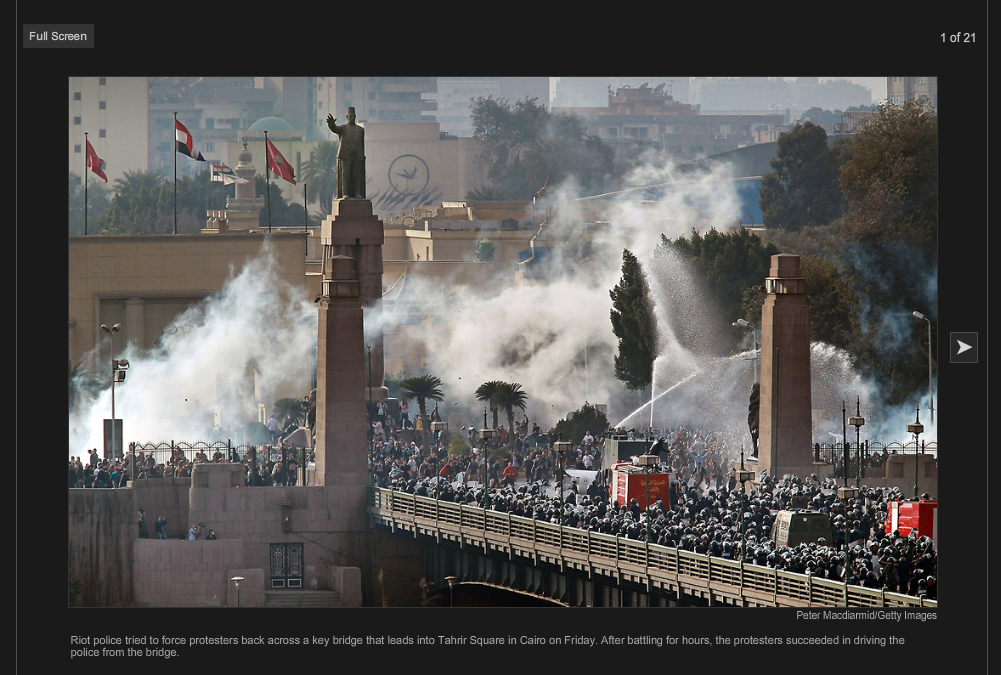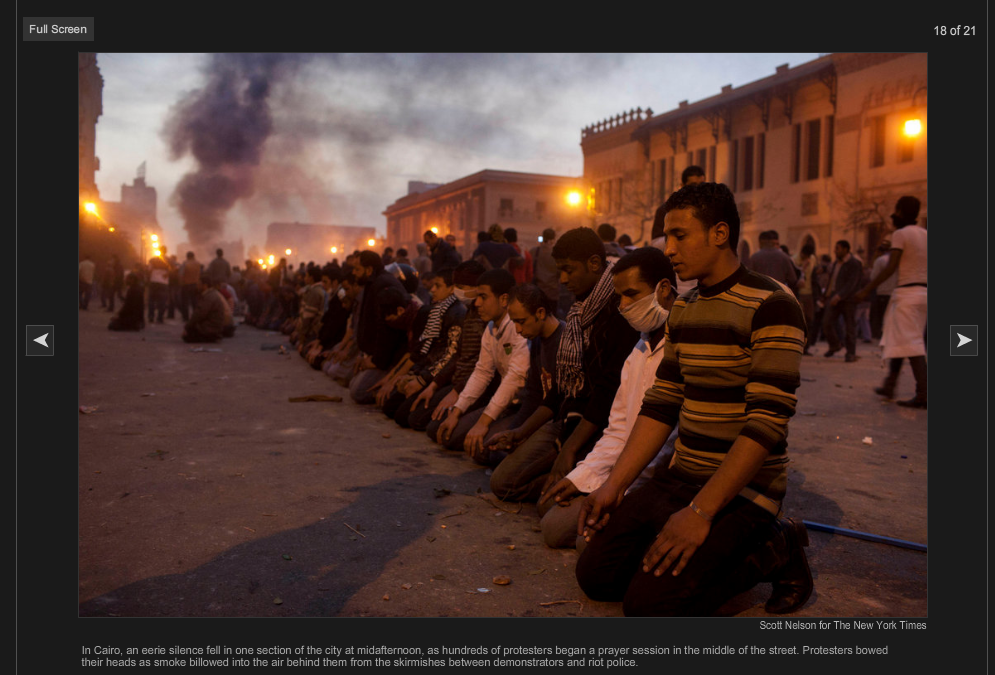
Lefteris Pitarakis Via New York Times
Since protests began one week ago across Egypt, the media has published many photographs of iconoclasm against images of
President Mubarak, or images depicting the
scale of the protests in Cairo. I'd like to raise the question of how representative images from this week are using one-point and two-point perspective, and how that perspective informs our sense of the unfolding events.

Screenshot from Saturday's New York Times
The three images in this post were included in Saturday's New York Times print edition. All three shots were taken Friday, January 28th in Cairo. In the second image (above) taken from a distance in Tahrir Square, the battle between protestors and riot police is framed within ominous symbolic and literal signs
of Mubarak's government. The height of the statues and the architecture of the bridge creates the scale, making the crowds of human actors seem vast, and yet simultaneously diminutive? Two-point perspective furthers the unsettling paradox of an emergent populace protesting within an existing power structure. Our eyes move in two directions: to the left, along with police and protestors, and then also to the right, into the smoky haze and background of imposing government buildings.

Screenshot from Saturday's New York Times
The third image (above) uses one-point perpective to capture a row of protestors kneeling for prayer in the streets. The orientation of the shot insinuates the immense number of
protestors, while communicating the depth of spiritual quiet. What we see in the closest part of the frame appears to be replicated ad infinitum, with all the optical persuasion of a hall of
mirrors. This image works in much the same way as the lead image by Pitarakis (top), which captures civilians standing on the row of army tanks (also in one-point perspective). The image of the tanks is different from the scene in prayer, however. One difference is the vanishing end point: in one, the eye moves toward halos of city lights at night; in the other, the eye finds dark, billowing smoke. Do these images attempt to organize and find order in the protests? Why did the NYT choose so many compositions of this kind? Are these compositions tied to a need to see Egypt through Western eyes?



Recent comments
2 years 29 weeks ago
2 years 44 weeks ago
2 years 44 weeks ago
2 years 50 weeks ago
3 years 4 weeks ago
3 years 4 weeks ago
3 years 4 weeks ago
3 years 6 weeks ago
3 years 6 weeks ago
3 years 6 weeks ago